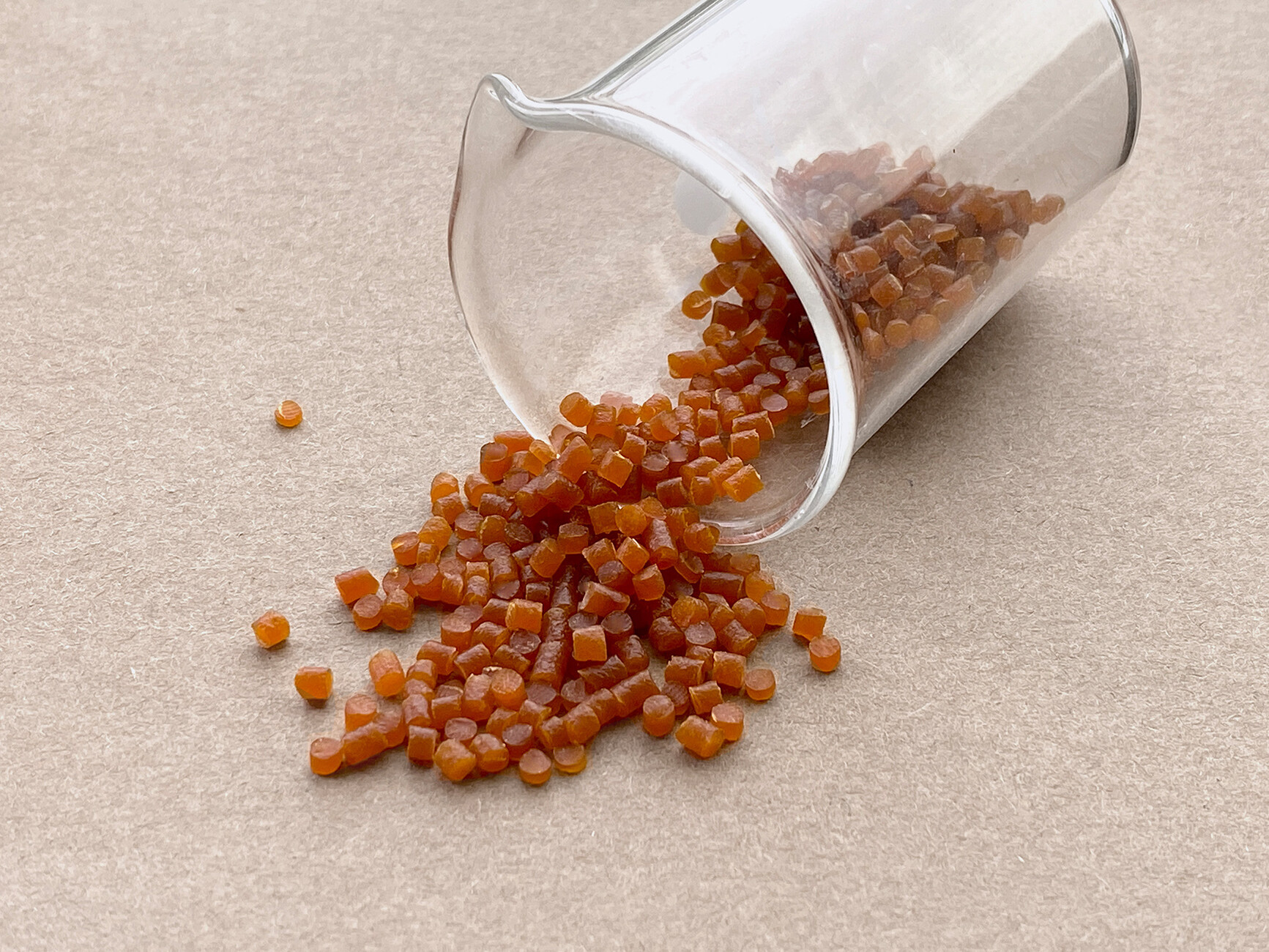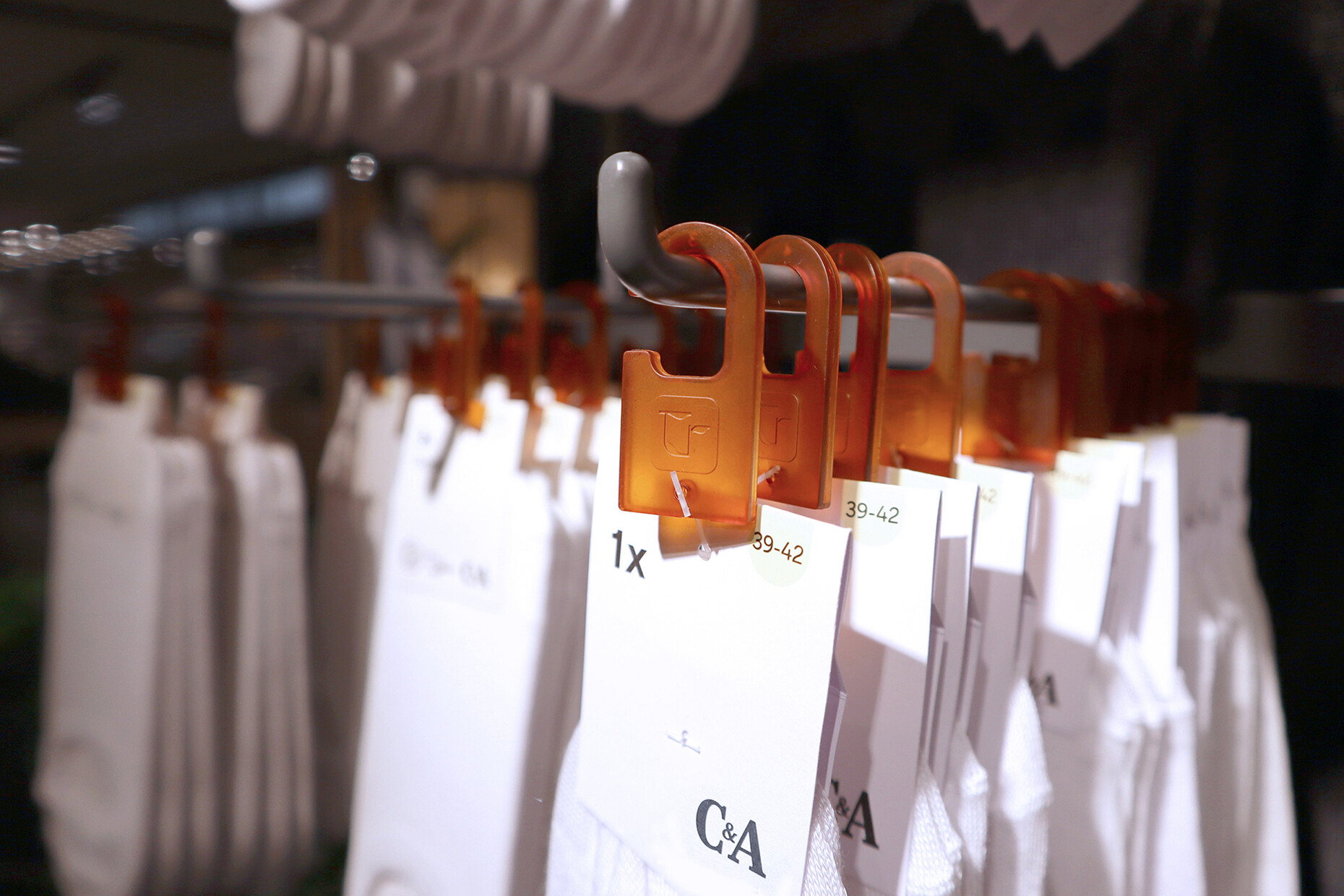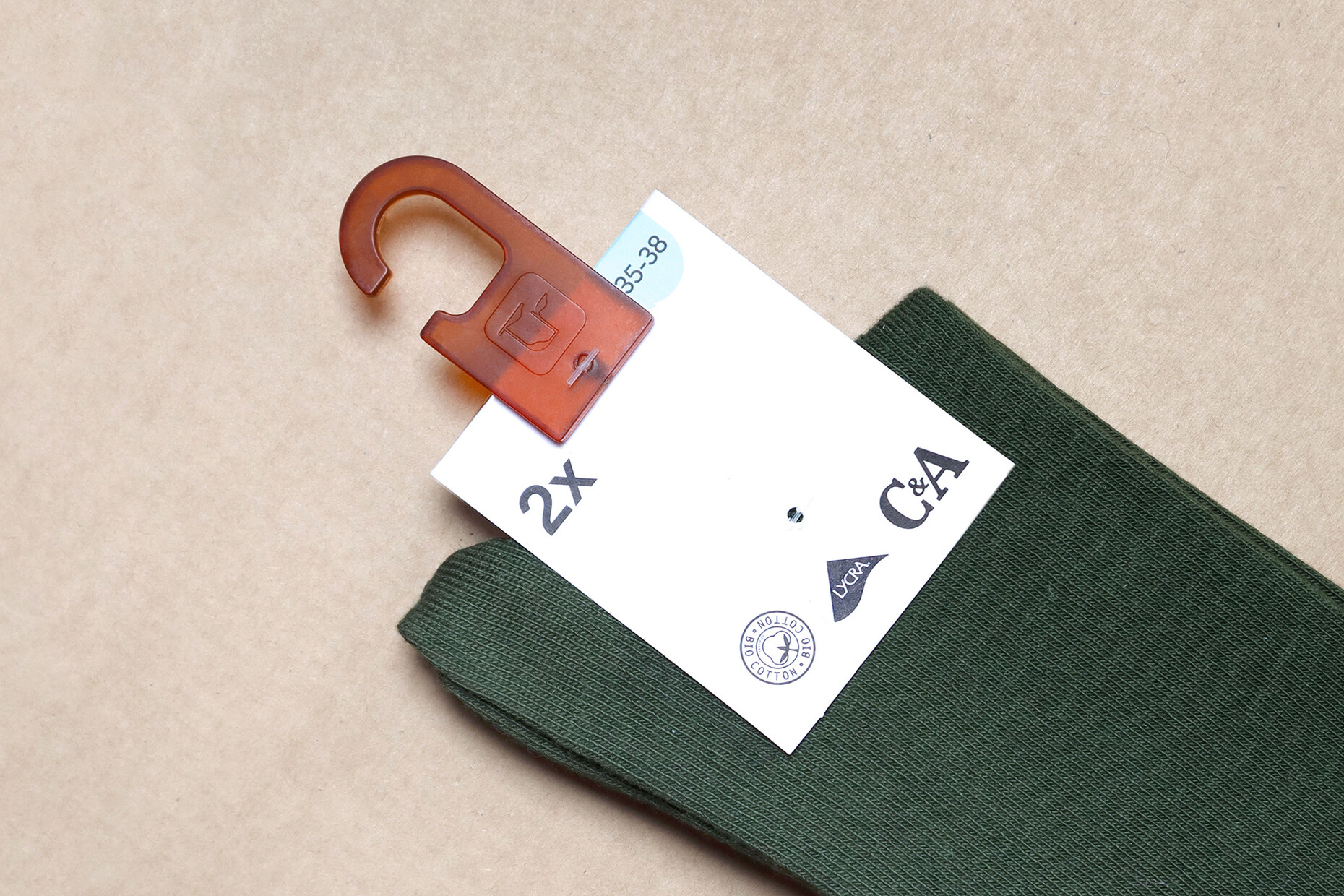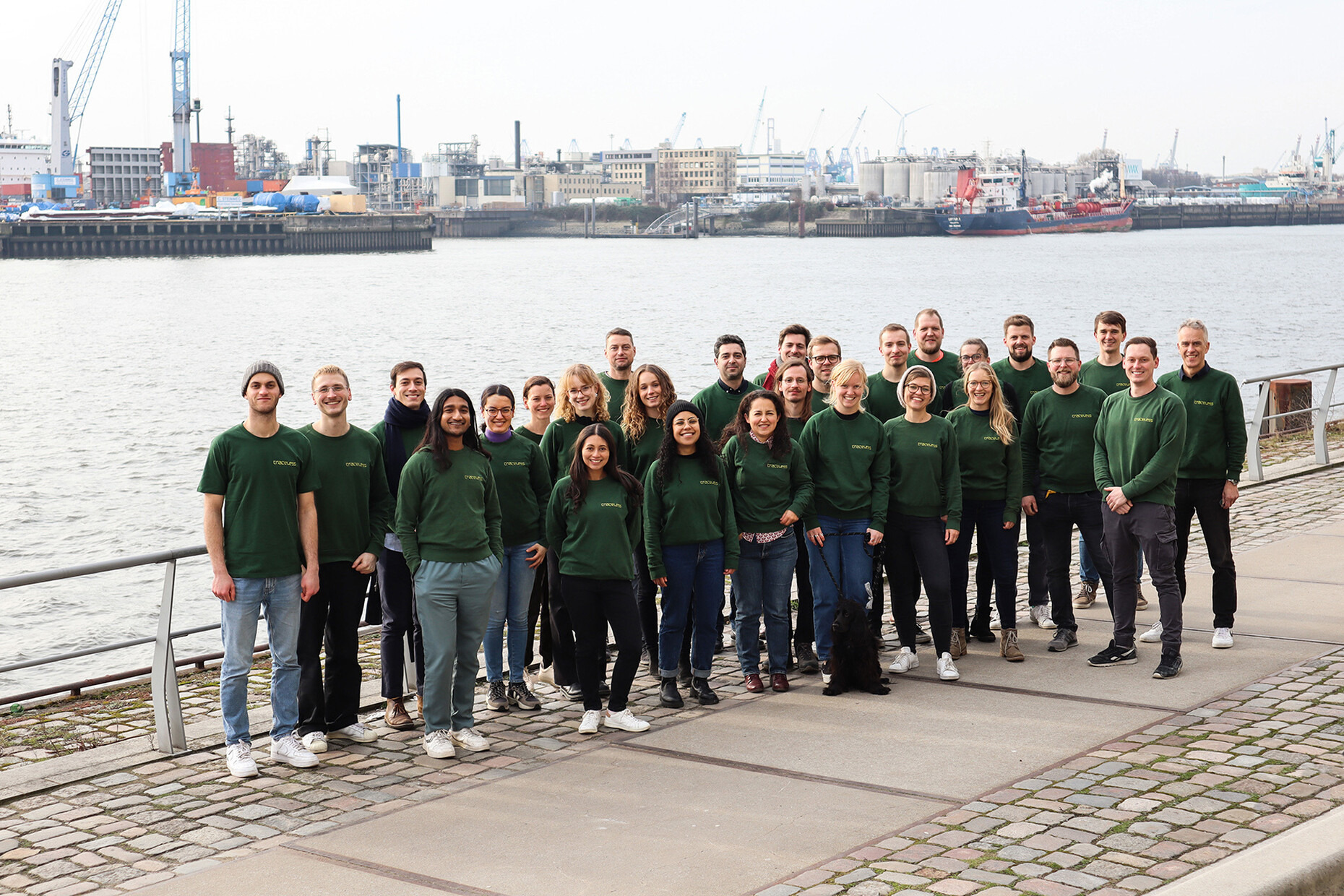SUSTAINABILITY
Without a trace
traceless is a start-up established in Hamburg in 2020 by process engineer Dr. Anne Lamp and economics expert Johanna Baare. Since then, their work has been widely recognized – and not only since they won the prestigious Deutsche Gründerpreis (German Startup Award) and the Deutsche Nachhaltigkeitspreis (National German Sustainability Award). Even large corporations have sought to team up with them, a prime example being most recently, European fashion retailer C&A. A joint pilot project has already reached the test phase.
Robert Schütz: traceless has already received a number of awards, including the Deutsche Gründerpreis; moreover, numerous large corporations are interested in entering into cooperation with you. Have you somehow captured the spirit of the times?
Dr. Anne Lamp: The topic that we are addressing with traceless is truly up-to-the-minute. The images we see of pollution by plastics are forceful, our dependency on fossil fuels and the reality of climate change are now finally in the forefront of debates. Environmental and conservation organizations have been highlighting these problems for a long time, the politicians are now taking an interest – and regulations are finally being put in place at EU level, for instance the Single-Use Plastics Directive, or the planned update to packaging guidelines. And combined with a heightened awareness on the part of consumers, what all this adds up to is pressure on manufacturers and industry to act, to come up with new solutions. This willingness was a great help to us, particularly when we first set up shop, after all, our solution is something completely new!
Robert Schütz: Products made from the plant-based biomaterial traceless are suitable for the biological cycle, in other words they decay on being composted. A new product could then be made from the resultant waste material. Could you explain this in more detail?
Dr. Anne Lamp: Our idea is based on the “cradle-to-cradle” concept – i.e., the idea that in a genuine circular economy thought needs to be devoted not only to the technical raw materials cycle, that is, classic recycling, but also to the biological cycle. Indeed, this must apply to all those products that could easily end up in the environment and to those for which recycling doesn’t work – something that is unfortunately the case with a great deal of products that are made of plastic nowadays. Taking this idea as our starting point, we have developed a technology with which we can manufacture a bio-circular alternative to plastic on the basis of vegetable waste materials produced by agricultural industry. Our traceless material is completely biobased, free from potentially harmful substances and suitable for composting at home. Since it is based on natural biopolymers it is not in fact a plastic in terms of its chemistry. At the end of its lifecycle, the carbon absorbed by this plant-based material is released again. Nutrients or energy are gained – something that in turn helps new plants to grow.
Mass production of your traceless material is in the pipeline – what will you be doing to remain true to the cradle-to-cradle concept here, as well?
Dr. Anne Lamp: Of course, even our production will leave a footprint – but since the latter will be considerably smaller than for manufacturing plastics, on balance we can be sure that savings will be made. Moreover, we designed the technology to manufacture our product with scalability in mind from the outset. The annual global production of plastics currently stands at a good 460 million tons*, around 22 million tons of which can end up in the environment – and because of the constantly growing demand, this figure could double by 2060. In order even to replace an appreciable amount and to generate an ecological value added, we need to be able to start producing material on a grand scale. And we can predict today what kind of an impact this will have because even before we established the company, we had a “consequential LCA” drawn up for us. This is an environmental performance evaluation which predicts the impact of industrial production from the acquisition of the relevant raw materials to production and ending up with the disposal phase, as well as including knock-on effects. The outcome: traceless not only prevents plastic waste, on average we save 83% of fossil fuel use during manufacture and up to 95% of carbon emissions during production and disposal as well as not resulting in a greater use of water or agricultural land.
Can you tell us a bit more about the technical aspects of the material?
Dr. Anne Lamp: Although traceless is not a plastic, technically speaking, it can be processed like a thermoplastic – and using the same equipment, for example injection molding or extrusion. These processing technologies are well established and it is important for us to build precisely on their infrastructure and know-how. In terms of the actual properties of the material, traceless can already compete in terms of a large number of important characteristics. And we are always working on optimizing these, thus making traceless suitable for as many product applications as possible. For instance, we produce the material in the form of a granulate which can be processed into cast parts, into foils or coatings.
I can think of one example here – one of the top-selling chairs globally is the Monobloc, which is made of injection-molded polypropylene. This kind of chair soon ends up on the scrapheap because of its poor quality. Is it possible that manufacturing it out of traceless granulate might provide a solution, since the material degrades back into its organic components?
Dr. Anne Lamp: In technical terms, it would be possible to manufacture it because the Monobloc is produced by injection molding. That said, does using a biomaterial for such things makes sense ecologically speaking? That’s something that needs to be thought about carefully. Our traceless material remains stable when stored but is also bio-degradable. It is comparable to a walnut shell – it can be stored for a very long time, however as soon as it is thrown on a compost heap which is moist and full of microbes it starts to decompose naturally. With reference to the Monobloc chair, we need to think long and hard. For how long on average will the chair be in use and under what kind of conditions? When it is outside and exposed to the elements for years, the lifespan of a degradable material is shortened. In such cases, a synthetic material is more suitable, so instead what needs to be done here is to ensure that the Monobloc is as durable as possible and can then be recycled technically without any negative impact on quality – meaning that the enormous burden placed on our environment by producing synthetic materials really makes sense and is not for nothing. Compostable materials such as traceless which boast an extremely small ecological footprint are meaningful for the kind of products which are anyway only used for a short time or which soon end up in the trash.
Could such a chair as the Panton, which is primarily designed for indoor use and is made of polypropylene, and is likewise injection molded, be suitable for being produced from biomaterial?
Dr. Anne Lamp: Since in this case the weather is not a factor it would be technically feasible. However, the example you have quoted really is a high-end article of furniture – and the mechanical demands on this kind of seating are considerable. We are not currently in a position to tackle high-performance items of this kind, because synthetic plastics, by comparison, have been developed and optimized over a period of decades. We still have a great deal of work ahead of us until we reach that level with our traceless materials. We are now bringing the first generation of the material to market and are accordingly starting with those smaller, more straightforward items.
You recently launched a pilot project with fashion retailer C&A. What we are talking about here is what appears at first glance to be quite a trivial consumer durable, producing hooks on which to hang textiles or socks. On the basis of this example, could you explain the benefit for C&A and for the environment?
Dr. Anne Lamp: Like many brands and manufacturing industries, C&A has set itself the target of doing away with as many single-use plastics in packaging as possible. In global terms, some eight to ten billion plastic clothes hangers are produced every year. The hangers in particular are hard to recycle because they are so small. Since they are so indispensable and cannot be made out of cardboard, C&A was in search of a plastic-like solution. This is where we came in with traceless. We developed the product jointly and then produced a first run using an injection molding facility. This has been tested with the regular range since December 2022. It was a major moment for us – our first product on the market! The customers in the stores hardly noticed the change because, apart from their amber color, the hangers look very much like the plastic ones. We took this as a success – traceless works in the same way as plastic but does not, in fact, contain any plastic.
What other applications can you think of using traceless, for example in the field of architecture and design?
Dr. Anne Lamp: Low-impact materials such as traceless have the greatest value added in the kind of products that might easily end up in the environment, the kind where recycling poses a problem. I am talking about things like disposable packaging or smallish everyday products, as well as about those “hidden” uses of plastics – for instance in glues or paper coating. We are busy gradually locking into as many applications as possible. Our strategy is to set up partnerships, both with brands and manufacturers. We are very glad that people recognize the disruptive potential of our technology. Working with natural polymers – nature’s “plastics”, so to speak, is by no means a run-of-the-mill job and our team is undertaking absolutely pioneering work in many regards here.
We are receiving inquiries from all kinds of fields, even from the building industry and from architects, and although we cannot yet provide a solution, we are open to new ideas. It is this exciting combination of high demands and a great challenge that spurs us on and makes our work on traceless so fascinating and demanding every single day.
One of the pioneers of the “cradle to cradle” concept, Dr. Michael Braungardt, sees the principle as a holistic process. How much does the raw material that is traceless contribute to succeeding in reducing the carbon footprint of finished products such as disposable forks?
Dr. Anne Lamp: It is impossible to generalize about that, we really do need to look at every product individually. For the material itself, however, a comparison might be helpful – plastic has a significant footprint throughout all the phases of its lifecycle. Producing synthetic polymer materials uses an appreciable quantity of resources, and this applies not only to fossil raw materials such as crude oil but also to the energy input in producing the material. We avoid both by using natural polymers which occur inside plants and which we extract in a simple, efficient process. Another important factor – plastics often include potentially harmful chemicals, not only in their processes, but also in the products themselves. Cradle-to-cradle takes account of this factor, we talk about “material health” and do without these potentially hazardous substances.
If new materials are often made of traceless does this mean that we are in danger of becoming even more of a throwaway society? After all, it does all disappear without a trace?
Dr. Anne Lamp: Just like any other product, those made of traceless are not designed just to be thrown away and litter the environment. We are alerting our customers to this fact and are actively educating them on the subject. The advantage of traceless is therefore its resilience in a system that is currently dysfunctional. We are already firmly a throwaway society and for us the question is now how can we escape from that non-cycle? We need to establish a system whereby all products, independent of the material they are made of, are disposed of correctly. We can achieve this if products are designed and produced in such a way that they circulate in closed loops – be these technical or organic ones – leaving no harmful traces on our planet.
*(Source: OECD Plastics Outlook, 2022)









